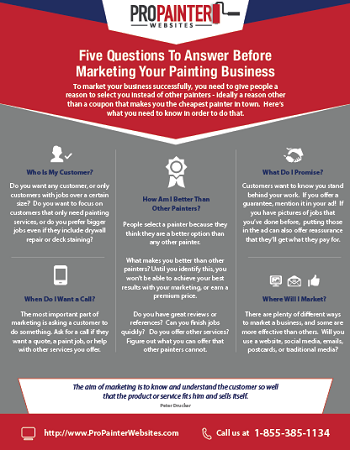Discover Just How Seasonal Impacts Can Impact The Efficiency Of Industrial Exterior Paint And Discover The Most Desirable Times To Make Sure Resilient Outcomes For Your Project
Discover Just How Seasonal Impacts Can Impact The Efficiency Of Industrial Exterior Paint And Discover The Most Desirable Times To Make Sure Resilient Outcomes For Your Project
Blog Article
Article Created By-Carlson Rodriquez
When you're intending an industrial outside painting task, seasonal elements can make or damage your outcomes. You'll wish to think about how temperature and moisture impact paint application and drying out times. Choosing the ideal period can ensure your paint adheres appropriately and lasts longer. However which periods are absolutely the very best for this sort of job? Let's check out the key elements that can influence your job's success.
The Effect of Temperature on Paint Application
When you're intending a business exterior paint job, the temperature can significantly impact just how well the paint adheres and dries out.
Ideally, you want to repaint when temperature levels vary in between 50 ° F and 85 ° F. If it's also cool, the paint might not treat correctly, leading to concerns like peeling or breaking.
On commercial refinishing services , if it's as well hot, the paint can dry also rapidly, avoiding appropriate bond and leading to an irregular surface.
interior painter plymouth need to likewise think about the time of day; early morning or late afternoon uses cooler temperatures, which can be more positive.
Constantly check the supplier's recommendations for the certain paint you're making use of, as they frequently offer advice on the perfect temperature level range for optimum results.
Humidity and Its Effect on Drying Times
Temperature isn't the only ecological variable that affects your industrial external painting job; humidity plays a substantial function as well. High humidity levels can reduce drying out times dramatically, influencing the general top quality of your paint job.
When the air is saturated with wetness, the paint takes longer to heal, which can cause issues like poor bond and a greater threat of mold growth. If you're painting on an especially damp day, be planned for extensive wait times between layers.
It's critical to monitor local climate condition and plan as necessary. Preferably, go for moisture levels in between 40% and 70% for optimal drying.
Keeping these consider mind ensures your job stays on track and supplies a long lasting coating.
Best Seasons for Commercial Outside Painting Projects
What's the best season for your industrial outside painting projects?
Springtime and very early autumn are commonly your best options. Throughout these periods, temperature levels are moderate, and moisture degrees are typically reduced, developing optimal conditions for paint application and drying out.
Prevent summertime's intense heat, which can trigger paint to dry also swiftly, bring about inadequate adhesion and surface. In a similar way, winter months's cool temperatures can impede correct drying and treating, taking the chance of the longevity of your paint job.
Aim for days with temperature levels in between 50 ° F and 85 ° F for optimum results. Bear in mind to check the local weather prediction for rain, as damp conditions can destroy your project.
Planning around these elements guarantees your paint job runs efficiently and lasts much longer.
Conclusion
Finally, intending your business external painting jobs around seasonal factors to consider can make a significant difference in the end result. By organizing work during the suitable temperatures and humidity degrees, you'll make certain far better adhesion and drying out times. Remember to watch on regional weather prediction and choose the correct time of year-- spring and early fall are your best options. Taking these steps will assist you attain a sturdy and professional coating that lasts.
